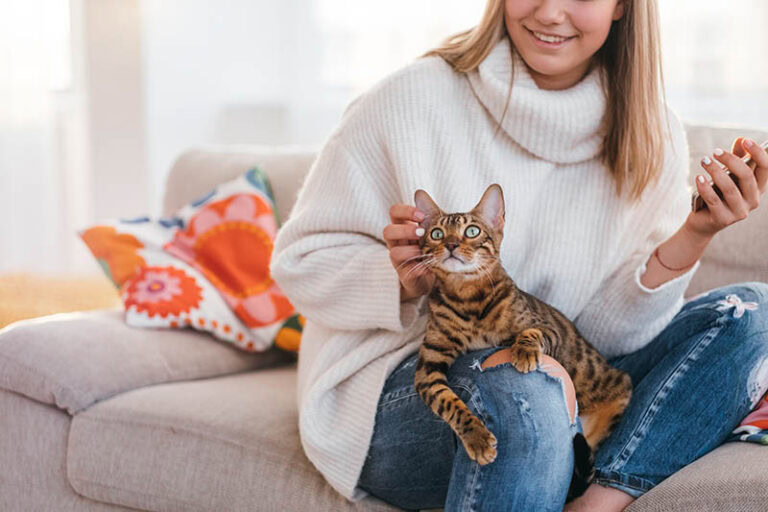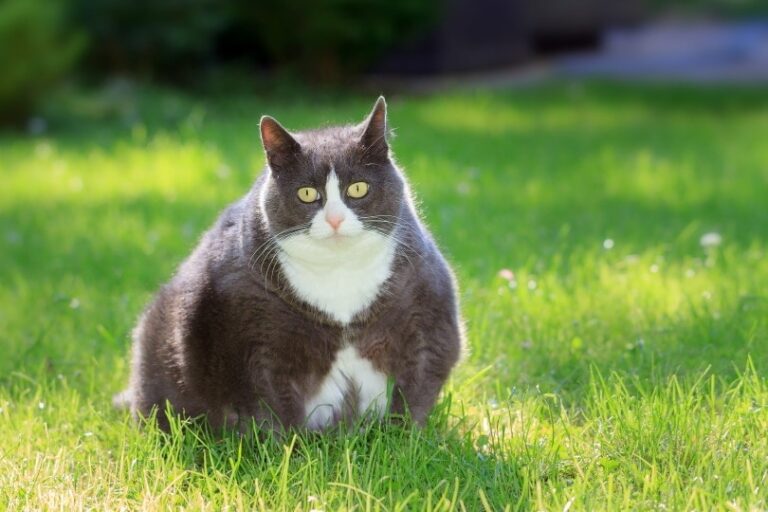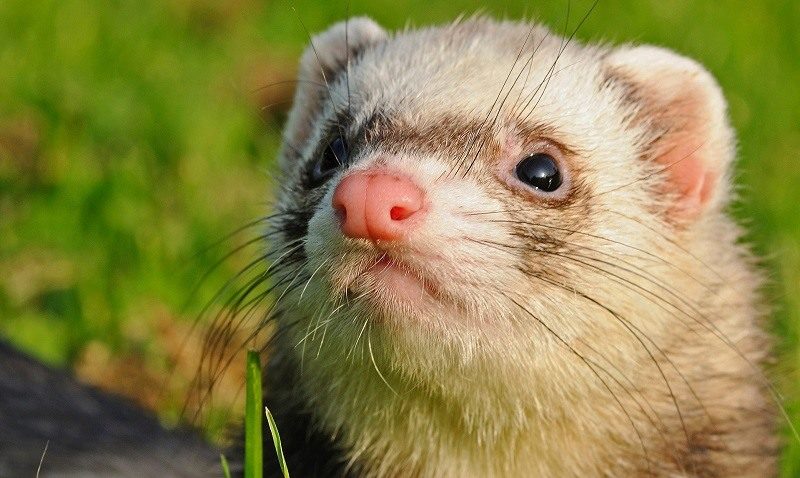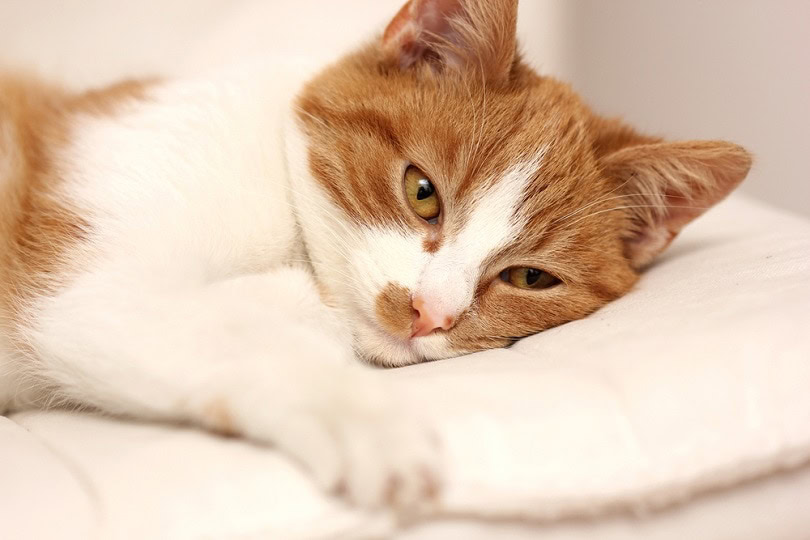VET APPROVED

The information is current and up-to-date in accordance with the latest veterinarian research.
Learn more »Click to Skip Ahead
Raising hamsters and guinea pigs is fun and rewarding. These furballs are gentle, cute, and a joy to care for. However, these rodents don’t make a good match when placed in the same cage, essentially because they are different species with their own unique needs and ways of communicating. So, the quick answer is, no, hamsters and guinea pigs cannot live together—definitely not in the same cage.
If you are short on space in your home, or if you just want your two pets not to be bored on their own, you may be tempted to have them cohabit in the same cage. However, don’t do it. These two species have very different temperaments and social needs; cohabitation is therefore not recommended at all.
In this article, you will learn the reasons that make this cohabitation difficult, as well as the other species that your rodents can cohabit with.

What Are the Main Differences Between a Hamster and a Guinea Pig?

These plump and cute rodents belong to entirely different species. This is why their physical appearance and temperament are so different.
Despite its name, the guinea pig has nothing to do with pigs and does not come from Guinea. This fluffy rodent of the family Caviidae is native to South America, formerly known as the Indies, where it is still raised for its flesh.
The hamster, from the Cricetidae family, is found all over the world. There are around 20 species, of which only five are domesticated (golden hamster, Roborovski hamster, Chinese hamster, Campbell hamster, and Russian hamster).
Guinea pigs are herbivores, while hamsters are omnivores. The hamster will prefer seeds, and it can store food, unlike the guinea pig, which must feed constantly. The latter must absolutely be supplied with vitamin C, which it is unable to store or make on its own. The hamster has cheekbones in which it holds and transports food.

Hamster vs Guinea Pig: How to Easily Recognize Them
The Guinea Pig

The guinea pig is much bigger than the hamster: it measures between 8 and 10 inches and weighs 2–2.6 pounds. Tailless and short on legs, it has a short or long coat depending on the species, with very varied colors. Its life expectancy is between 5 and 7+ years.
The Hamster

A hamster lives between 1.5 and 3 years. It has a small tail, and its size varies greatly depending on the species. The smallest of the hamsters kept as pets, the Roborovski hamster, weighs only 0.7-0.8 ounces (20-25 grams), while the largest, the golden hamster, weighs around 2.8-5.6 ounces (80-160g).
Hamster vs Guinea Pig: A Different Temperament

The guinea pig is a super friendly animal that likes to live in groups. It can even get depressed if it is left alone too often. Therefore, the best is to raise it in a small group and take care of it frequently.
Conversely, the hamster will not stand to live with a roommate. Very active, especially at night, it needs to spend its energy. It does not like to be petted and may even be aggressive and bite if it feels threatened. Also, note that the hamster hibernates; don’t worry if, in winter, your pet becomes sluggish and doesn’t want to play or eat!

Cohabitation Between Guinea Pigs and Other Animals

With other guinea pigs, they will be thrilled. While with other pets, caution is required since they may not even get along at all. Here are some examples of friendships that can develop with a guinea pig and other animals.
Rabbit and Guinea Pig Cohabitation
Although rabbits and guinea pigs may seem to get along at times, they should not be housed together. Rabbits are much stronger and can unintentionally injure guinea pigs, even during play. Their communication styles, dietary needs, and temperaments are also very different. In some cases, a rabbit may become frustrated or aggressive toward the guinea pig, especially if the guinea pig’s behavior becomes too persistent or invasive. For the safety and well-being of both animals, it’s best to house them separately.

Cat and Guinea Pig Cohabitation
Cats and guinea pigs should not be kept together. Guinea pigs are prey animals, and even the gentlest cat has a natural hunting instinct that can be triggered by the guinea pig’s movements. The significant size difference also puts the guinea pig at risk of serious injury, even if the cat does not intend harm. While some people manage to keep both species in the same household, strict separation is a must, each pet must have their own secure space, and direct interaction should be avoided. If your guinea pig lives on a balcony or in a yard, make sure it is always fully protected from cats.

Dog and Guinea Pig Cohabitation
Dogs and guinea pigs should never be left alone together. Guinea pigs are small, fast-moving prey animals, and many dog breeds have been historically trained to hunt rodents. This natural instinct can pose a serious risk, even if your dog seems friendly or curious.
While it might be possible to have both species in the same home, they should always be kept in separate, secure areas. If you already have a dog, take special care to gradually and safely introduce them to the presence of your guinea pig, under close supervision and with a secure barrier between them. Your priority should always be your guinea pig’s safety.

Mouse or Rat and Guinea Pig Cohabitation
Mice or rats should not be housed with guinea pigs. These are entirely different species with different needs in terms of space, diet, social structure, and activity levels. Housing them together can lead to stress, territorial behavior, and even injury. While it might seem convenient to keep small animals in the same enclosure, it’s essential to respect their individual welfare by giving each species its own appropriate and secure living environment.

Can Hamsters Cohabit Together?
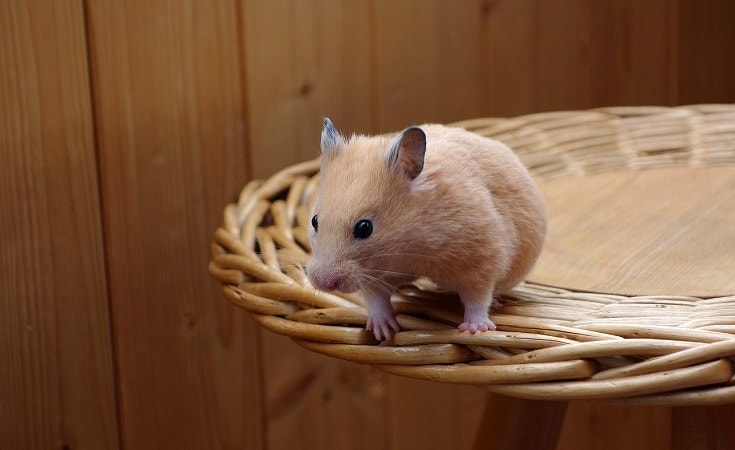
Since we’ve established that hamsters and guinea pigs shouldn’t be kept together in the same cage, you might be wondering if hamsters can live with the same species. Generally speaking, no. But it depends.
Cohabitation is not easy with hamsters. These furballs tend to want to fight with each other. If you want more than one hamster in a cage, you should know the hamster’s species and social skills before introducing them. Most hamsters are extremely solitary and prefer to live alone, however, some species (like dwarf hamsters) can live with other congeners if each has its own space. But always be careful; you can never know for sure that everything will be fine in the long-term.
Another tip is to make these little animals live together from an early age. If, for example, two hamsters from the same litter have grown up together, they will be able to share their territory without too many conflicts.
But if you haven’t been able to get hamsters from the same litter, avoid having animals over 6 weeks old, the age at which rivalries begin to develop.
How to Facilitate Cohabitation Between Hamsters
If you have checked with your vet and they’ve given you the thumbs up to keep your hamsters in the same cage, you must follow specific rules to avoid injuries and fights:
- Provide a cage big enough. A large cage will avoid many problems, and if one hamster’s mood changes, the other can go and hide in their corner.
- Check the sex of hamsters. It is better to have hamsters of the same sex cohabit. Otherwise, you risk having tons of fluffy babies over time!
- Put their food in different places. To prevent the animals from fighting over food, provide each of them with a bowl and a water bottle.
- Watch their behavior closely. Even if they get along well at first, hamsters can end up fighting and becoming irritable overnight (even after several months of living together). In this case, act without delay by isolating the disruptor.
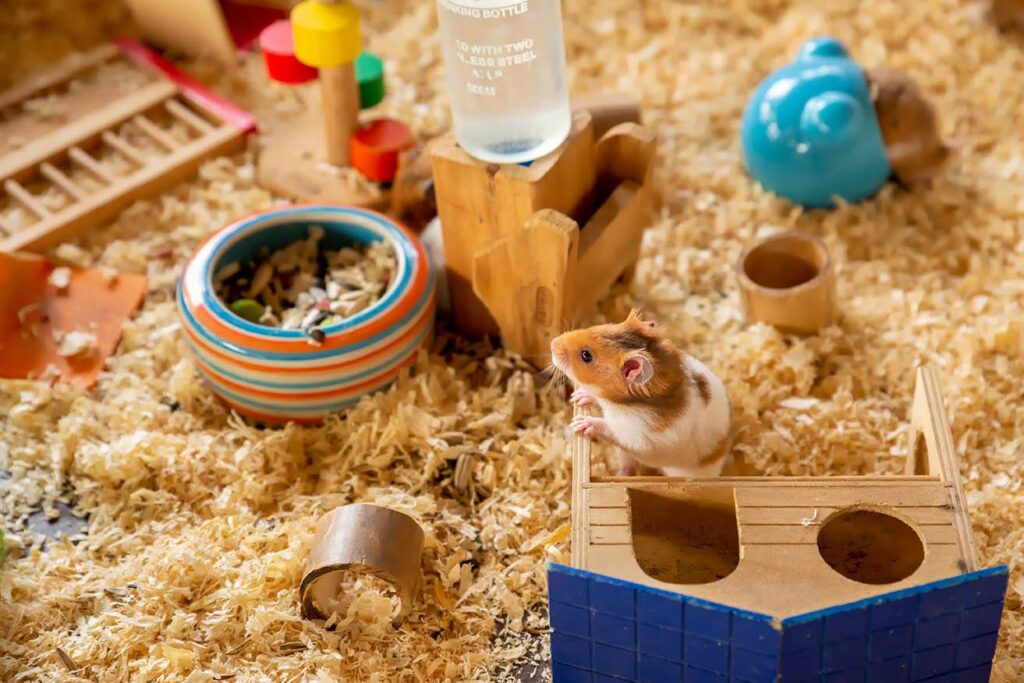

Conclusion
In short, hamsters and guinea pigs should never be kept together. They are very different animals with distinct social, dietary, and environmental needs. Hamsters, especially Syrian hamsters, are highly territorial and prefer to live alone. Keeping them with guinea pigs—or even with other hamsters—can lead to serious fights and injuries.
Some Dwarf hamster species may tolerate living in pairs, but only under specific conditions: they should be introduced at a young age, ideally be littermates of the same sex, and live in a very spacious cage with multiple feeding and hiding areas to reduce competition. Even then, fights can still break out, so close monitoring is essential.On the other hand, if your guinea pig is living on their own, or they’ve lost a companion, you should consider finding another friend for it as soon as possible. At least at the beginning of the cohabitation, observe them carefully to make sure they develop a lasting friendship without fights.
See also:
Featured Image Credit: Left – Hamster (dep377, Pixabay) | Right – Guinea Pig (livianovakova10, Pixabay)


